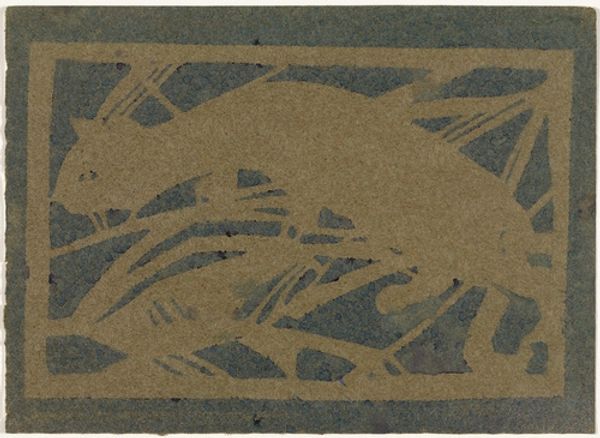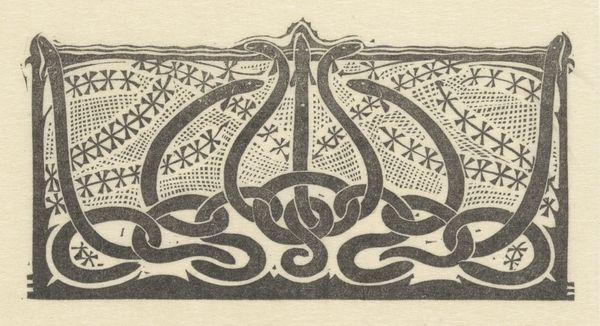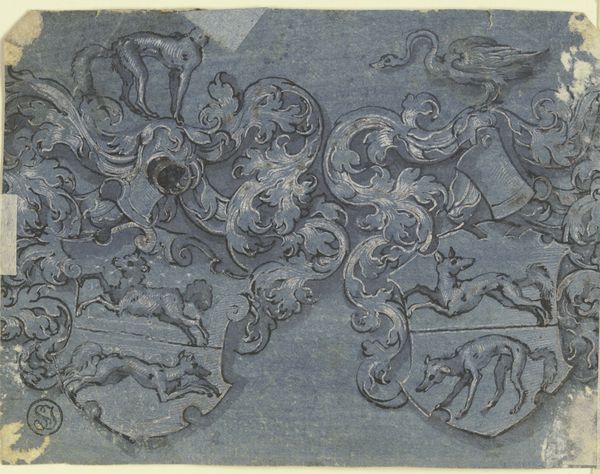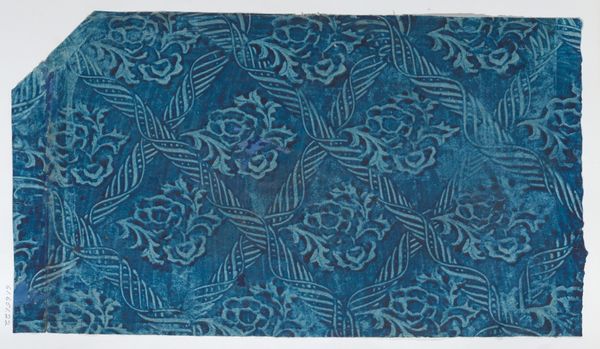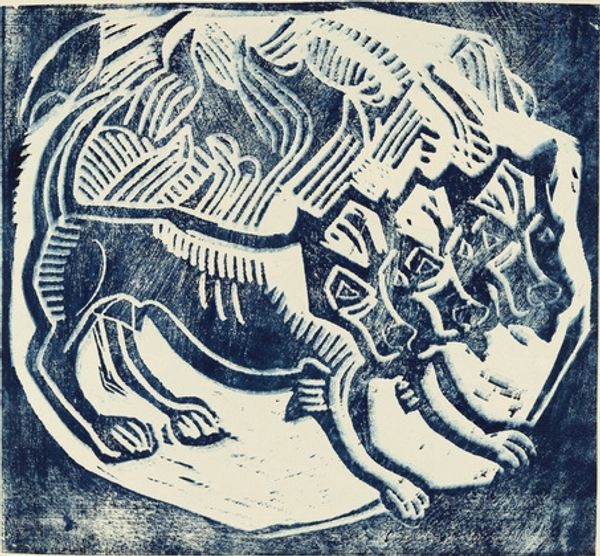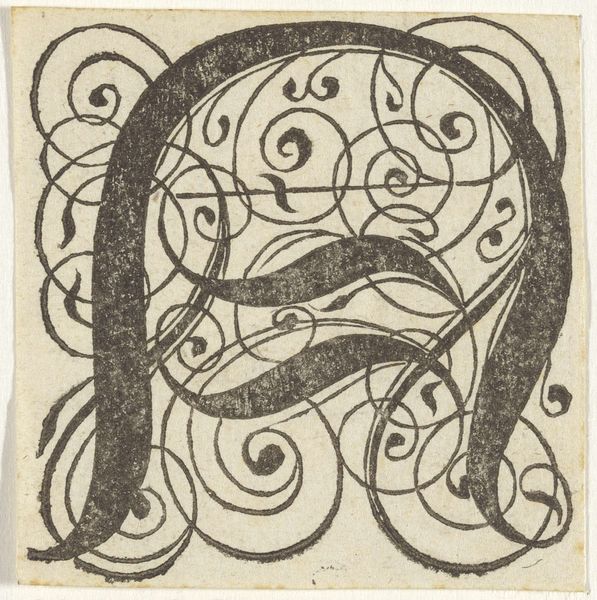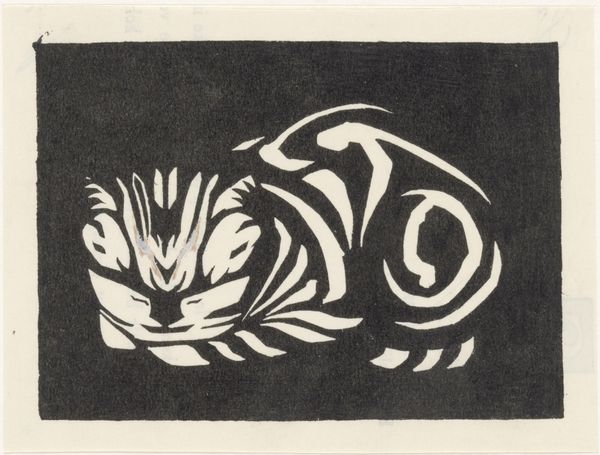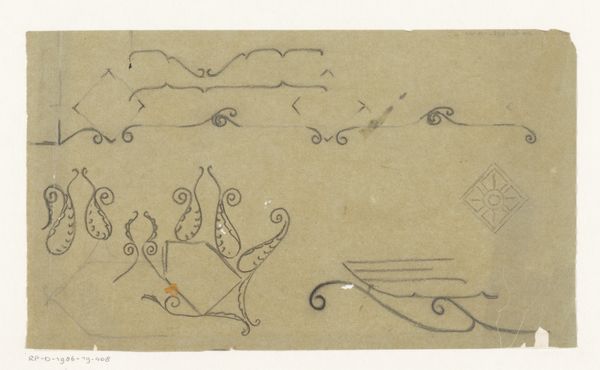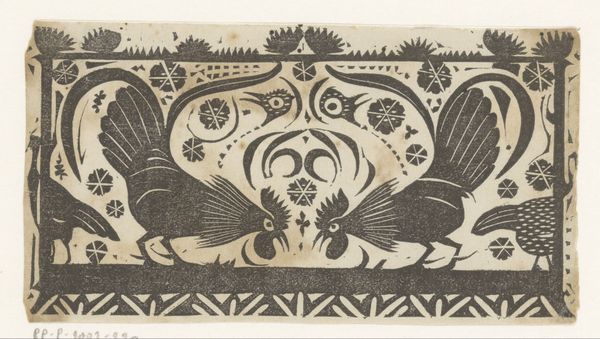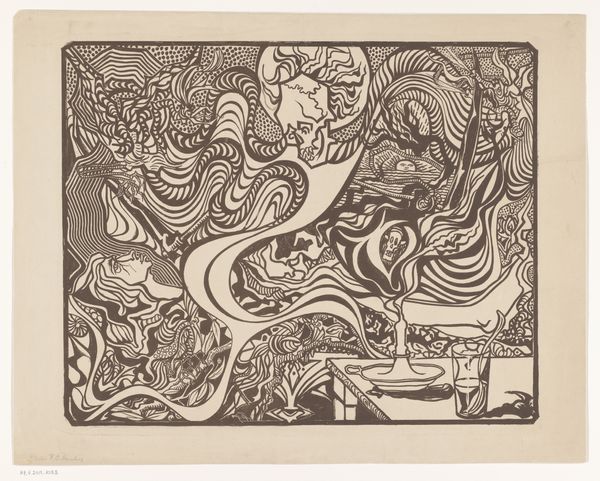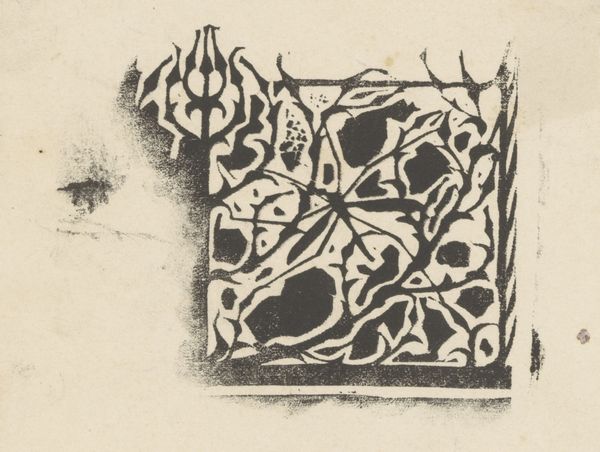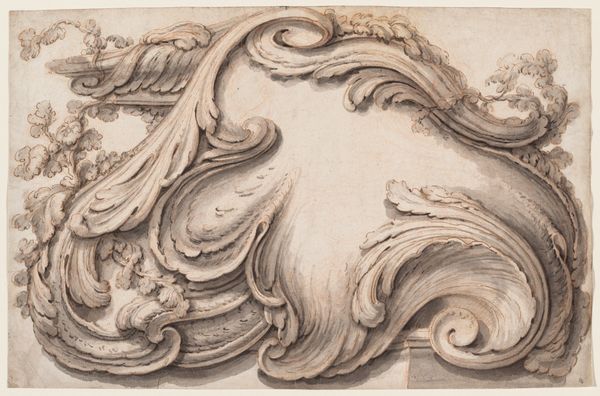
graphic-art, print, linocut
#
graphic-art
#
art-nouveau
# print
#
linocut
#
linocut print
#
geometric
#
expressionism
#
abstraction
Dimensions: height 250 mm, width 323 mm
Copyright: Rijks Museum: Open Domain
Curator: Here we have Jacoba van Heemskerck’s "Compositie XX," created in 1918. It’s a linocut print, currently held in the Rijksmuseum. Editor: It’s striking, isn't it? Immediately, the colors grab you. This intense blue battling these organic orange shapes – it feels almost like a secret code or an otherworldly flora. There's something incredibly bold and unapologetic about it. Curator: Van Heemskerck was working in a very turbulent time, and deeply involved in expressionist circles. Her choice of abstraction here isn’t just aesthetic. It’s a conscious decision to reject representational art in favor of something that could communicate deeper, perhaps less definable, truths. This resonates with the political and social upheavals of the era, particularly considering the role of women in these contexts. Editor: That makes total sense. There is an inner chaos that speaks to outer chaos, doesn’t it? It reminds me a bit of Hilma af Klint's work actually, in terms of that drive to visualise a world beyond the immediate and obvious, using non-objective forms. Do you think her gender impacted the reception of this piece? Curator: Undeniably. Works by female artists, particularly those that diverged from traditional subject matter or techniques, were often marginalized or interpreted through a lens of gendered expectations. This piece, with its raw energy and abstract forms, challenged societal norms and artistic conventions, complicating her acceptance within a male-dominated art world. But there is something inherently subversive in that! Editor: Absolutely. I wonder, did she think about the end viewer as she created this piece or was it purely an outlet for self expression, disconnected from all constraints, floating like some of those abstract floating islands. I love how accessible and raw the medium is as well, this is a true piece of print, imperfections and all. Curator: I think it was a bit of both; these forms serve not just personal explorations but stand as assertions within the broader narratives around modernism and expressionism, urging a reassessment of accepted perspectives and values in the face of societal shifts. It serves as a lens through which to reassess the history and power dynamics involved in determining whose voices get amplified and canonised within artistic circles. Editor: Right, exactly. It’s a testament to the enduring power of art as a form of rebellion and a catalyst for social commentary, that even in pure forms there can be such bold messages. Thanks, Jacoba. Curator: A bold piece and one that prompts further discussion about visibility, historical narrative, and the very meaning of expression.
Comments
No comments
Be the first to comment and join the conversation on the ultimate creative platform.
